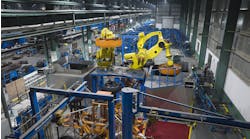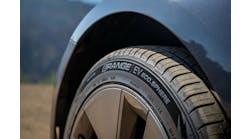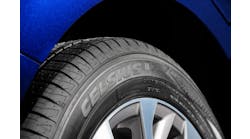Tire prices are going up. Supply issues continue. And tire dealers tell Modern Tire Dealer both are having an effect on what happens at the retail tire counter.
Nearly every major tire manufacturer has announced a price hike in recent months, and MTD set out to find how that’s affecting sales and profitability. We checked in with six dealerships for a progress report as the first quarter comes to a close.
Jeff Cheek owns Countryside Tire & Auto Service in Oak Ridge, Tenn., a retail-focused tire dealership that focuses on Michelin and Goodyear-brand tires. He says “tire prices in general have had little to no effect on my business.”
Here’s why:
“Almost every manufacturer has had similar increases, so from a program standpoint, with me running a Michelin and Goodyear focus, we aren’t at a disadvantage to other programs. And every other shop has the same price increases to deal with.”
Plus, Cheek doesn’t keep a big inventory of tires on hand, “so I’m personally not sensitive to tire price movements.
"We have a standard percentage markup that we do in real-time when we quote tires, so any price increase gets immediately passed on to the customer,” he says. “I think my sales counter staff would have a hard time even noticing a change.”
Cheek says his profitability hasn’t been affected by tire price increases, but that doesn’t mean he’s not worried about it.
“A good portion of my tire profitability comes from back-end money through tire programs. The impact I wonder about is not from price increases, but from availability.
“On certain sizes and in certain brands, I’ve seen huge holes in availability. We’ve had retail customers with common tire sizes where we had no Michelin or BFGoodrich product available locally or overnight. So between multiple vendors, that is 10 to 15 warehouses with nothing.”
That leaves him to offer consumers a Uniroyal product or a non-program tire. He makes a little less on Uniroyal products and nothing on non-program tires, which Cheek says “could potentially keep me from hitting a goal or a higher tier at the end of the year.”
While Cheek doesn’t keep inventory on hand, Telle Tire & Auto Service Inc., based in St. Louis, Mo., does. The company has 16 locations throughout Missouri.
Owner Aaron Telle says inventory has been a big part of the company’s strategy when it comes to both pricing and supply.
“We have been proactive this year and prepared for the price increases," he says. "We have increased our inventory significantly at the beginning of this year across all of our top brands. We made these inventory purchases … before the price hikes occurred, but (we were) also concerned with current stocking levels and wanted to ensure we have strong coverage across our core brands and top SKUs.”
Telle says tire price increases are being passed on to consumers “and at this time we are not seeing any pushback.”
And he expects manufacturers will hike prices even more in 2021 “as demand from the consumer increases and supply shortages will more than likely continue.”
In Montana, Nick Fox is expecting the same thing. Fox and his father own two Point S tire dealerships in Helena, Mont.: J&J Tire & Auto and Capital City Tire & Auto. Fox says the current price hikes are sticking, but he’s still expecting additional increases throughout the year — perhaps as many as five hikes “from certain manufacturers.”
And he can see plenty of pressures at work in the market: tariffs and the demand for skilled labor, as well as the overall demand for higher wages in all industries.
Fox says there’s no other option than to pass along the increase to consumers. “We have to. There is such a demand for skilled labor right now that our wages have increased substantially over the last couple years.
“So far, profitability is holding strong," says Fox. "This is definitely a concern for us. To combat price increases and shrinking margins, we have been focusing on breaking out the price for the tire itself."
Next to the tire price is a breakdown for installation - including the mount, balance, valve stem, TPMS service pack and tire disposal. Plus, the business is selling an enhanced tire warranty.
In California, Richie Howard, president of Bruce's Tire & Auto Service, believes trying to absorb the price increase would be bad for business.
"We cannot absorb the cost increases," Howard says. "I think this would be detrimental to our business and would have a terrible impact on profitability."
Bruce's Tire uses a tire pricing matrix that accounts for tire cost, category and brand. Depending on what the dealership pays for the tire, "it automatically is priced according to the price matrix," Howard says. That matrix protects profitability, though Howard admits there's a chance the gross profit percentage on a tire might change slightly if the cost of a tire bumps it up into a higher tier of the matrix. (For example, if a tire cost $95 a year ago but has risen to $102 this year.) But at the same time the company would make more gross profit on a tire that rose in price from $85 to $95. That's why Howard says the pricing adjustments haven't "had a huge impact on our pricing thus far."
Howard thinks consumers will be the ones who really pay.
"I think one of the biggest impacts this will have is to our customer base and to all end users nationally. I don't think businesses can afford to absorb the increases, so they must be passed along to the end users," Howard says. "We anticipate this will lead to customers doing more due diligence and price shopping.
"We have seen an increase in this, but that may be due more to the current economic situation than the price increases. Many customers have been deciding to step down a tier on their purchase. Before they may have purchased a premium tier one tire such as a Bridgestone; now they may choose a tier two tire such as a Hankook. Or if they typically would purchase a tier two tire, they may go to a tier three such as Americus or Delinte."
With 67 stores in Missouri, Illinois, Arkansas and Kentucky, Plaza Tire Service Inc. is watching tire prices go up on both domestic and imported tires. President Mark Rhodes says prices on imports have risen 5% to 10% since the start of the year, while domestic-produced tire prices have gone up, or are in the process of going up this spring, by 6% to 8%.
Plaza Tire is passing along those increases to its retail customers, as well as its wholesale customers.
Stacked on top of that, Rhodes says, are freight surcharges on imports.
“Some of them doubled or tripled,” says Rhodes, noting he’s billed for surcharges ranging from $1,500 to $2,500 for a container load of tires since the beginning of the year. And even with those extra fees, shipments are taking longer to arrive due to backups in ports and heightened demand for containers.
Last year, containers arrived within 90 or 100 days, he says. In 2021, shipments are pushed out to 150 or 180 days. He expects those problems to linger.
“I think that’s going to be a challenge all year.”
On the commercial side, Bill Morgan is seeing the same pricing pressures. He’s president of Bill Morgan Tire Co., a company with operations in Richmond and Lexington, Ky.
Morgan is hopeful that as the shipping world normalizes over the next year or more, pricing will come back down.
“I believe once global shipping stabilizes, tire prices will return to pre-COVID prices,” says Morgan. “The petroleum industry dictates a tremendous amount of this, but with logistics and shipping returning to normal, (we) will see prices go back down in 12 to18 months.”
But for now, he’s passing along price hikes to his customers.
“Unfortunately, there’s not enough margin in tires anymore to absorb such a price increase.”
And he doesn’t think commercial tiremakers are done adjusting prices just yet.
“With the major manufacturers in our industry taking increases in the first quarter, I wouldn’t be surprised to see another price hike on commercial product in the coming months. Also, I think OTR will be going up soon.”




